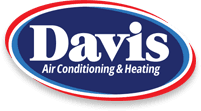Helping Your Asthmatic Children With Better IAQ
Indoor air quality (IAQ) affects everyone in Clute, Texas, but children with asthma have the most to lose when allergens, volatile organic compounds (VOCs), and other pollutants go unchecked. For them, anything from air fresheners to microscopic dust mites could trigger a potentially life-threatening asthma attack. When you have asthmatic children, you want your home to be their refuge — a place where they feel comfortable and secure. Unfortunately, according to the U.S. Environmental Protection Agency (EPA), indoor air is often more seriously polluted than outdoor air. To make your home safer for asthmatic children, find ways to boost indoor air quality such as upgrading cleaning routines and maintaining the HVAC system.
Install Proper Ventilation for Combustion Pollutants
The EPA has identified three types of indoor air pollution: combustion pollutants, VOCs, and allergens and asthma triggers. Combustion pollutants are gases and particles produced by the burning that takes place in your fireplace and any appliances that use gas, fuel oil, coal, kerosene, or wood.
Proper ventilation is the key to protecting your family from these pollutants. That protection includes keeping chimneys clean and unobstructed and making use of vent hoods and exhaust fans on gas appliances. You may also want to install a high-quality carbon monoxide (CO) alarm to monitor CO levels and a ventilator to supplement the safety measure built into your appliances.
Replace Products That Contain VOCs
Many people have never heard of VOCs, and those who have may not be aware of how many household items produce them. VOCs are gases released from certain materials and products commonly found in our homes, including the following:
- Aerosol sprays
- Cleaning products, including disinfectants and air fresheners
- Pesticides and insect repellents
- Paints, wood preservatives, and paint strippers
- Dry-cleaned clothing
- Carpets, rugs, and upholstery
- Craft materials, such as glue and permanent markers
- Copiers and printers
- Building materials
Exposure to VOCs — especially prolonged exposure — can result in symptoms such as eye, nose, and throat irritation; headaches; dizziness; nausea; and fatigue. Some of these symptoms are particularly dangerous for those who already suffer from asthma or other respiratory conditions.
With VOCs, your first step should be to eliminate and avoid them when possible. Use homemade cleaning solutions or switch to eco-friendly brands and look for VOC-free paint, upholstery, and carpeting. Then mitigate any VOCs you can’t avoid with ventilation and air filtration. For occasional arts and crafts projects, opening a window may be enough. However, if you regularly find yourself surrounded by paints and adhesives, consider having a ventilator installed in your home to circulate fresh air.
Upgrade Your Cleaning Routine
After replacing any cleaning products that could contribute to poor indoor air quality, take a moment to consider the rest of your cleaning routine. A few minor changes, such as upgrading to a vacuum cleaner with a HEPA filter and strong suction, can make a difference. HEPA filters trap smaller particles than other vacuum cleaner filters — be sure to clean or replace these filters regularly and vacuum at least once a week. If you don’t already vacuum your upholstered furniture, add that chore to your list to help keep dust to a minimum.
If you have hardwood, laminate, or tile floors, invest in a mop with reusable microfiber pads for dusting and mopping. You may also want to replace the rags or paper towels you use for dusting and wiping down counters with microfiber cloths. Use a damp cloth to wipe down ledges that often go overlooked, such as windowsills and the tops of doors. Wash sheets and blankets weekly, and launder curtains often.
Use Air Filters to Catch Allergens
If your asthmatic child also has allergies, or if you know that certain allergens tend to trigger asthma attacks in your child, a whole-home air purifier may be a worthwhile investment. Compared to a portable air purifier, a whole-home model will work along with your existing HVAC system to filter the air throughout your house. The Infinity Air Purifier GAPA, for example, can capture up to 95 percent of pathogens down to 0.30 microns in size. It also kills or deactivates up to 99 percent of the germs, pollen, and mold it captures.
Whatever you decide to use for air filtration, be sure to clean or replace the filter regularly. This replacement includes the filter built into your HVAC system, which you should change every 30 to 90 days. You can also boost the air purifying benefits of your existing system by choosing filters with higher MERV ratings instead of using the cheapest ones available.
Add Some Indoor Plants to Help Clean the Air
If you’re not able to buy a whole-home air purifier, that doesn’t mean cleaner air is outside your reach. While you save up for the air filter of your dreams, adopt a houseplant or two. Many different plants, from peace lilies to spider plants, can actually help purify the air in your home.
To maximize the benefits, consider which VOCs are most likely present in your home and find plants that target those specific gases. Don’t forget to take into account your gardening skills, as well as how much light and water each plant requires. If you aren’t particularly knowledgeable about houseplant care or don’t have ample natural sunlight in your home, stick with plants that are hardy and adapt well to many types of environments. Some plants are more forgiving than others, so use that quality to your advantage.
Maintain a Constant Humidity for More Breathable Air
Two other whole-home solutions to consider are dehumidifiers and humidifiers. Ideally, you should keep relative humidity indoors between 30 and 50 percent. When relative humidity falls outside that range, it can cause problems, especially for those with asthma. High humidity can offer the perfect environment for mold to grow, while low humidity can dry out your skin, eyes, and airways. Either extreme lowers IAQ and makes breathing more difficult.
Although your existing home HVAC system already helps with high humidity (your air conditioner pulls moisture out of the air as it runs), it can only do so much on its own. To fully control relative humidity in your home, you may need a whole-home dehumidifier. Alternatively, if you find that high humidity is a problem only in one area of your home, such as the basement or bathroom, a portable dehumidifier may suffice.
Some homes experience the opposite problem, with relative humidity often falling below 30 percent. In that case, a whole-home humidifier is a good solution. Alternatively, you may need only a small humidifier to use periodically in your child’s bedroom.
Recruit Some Professional Help
Although many of the suggestions in this article are DIY-friendly ones, call a professional for the others. The experts at Davis Air Conditioning and Heating can recommend the best products to improve your home’s IAQ, from energy-saving ventilators to UV lamps that inhibit mold and bacteria growth on the indoor coils of your HVAC system.
We also offer HVAC system maintenance and duct-cleaning services. By scheduling regular tuneups, you give our technicians a chance to clean various components of your HVAC system, such as the indoor coils and blower assembly, and proactively address any issues. For the best results, schedule a tuneup at least once a year for preventive maintenance. Two annual visits are better; that way, we can check your heating system before cold weather arrives and your cooling system when warm weather returns.
Duct cleaning doesn’t need to be done nearly that often, but it plays an important role in improving IAQ. If your home’s ductwork hasn’t been cleaned in a while, it could be filled with dust and other particles. We will take before-and-after photos so that you can see the difference and close any gaps between the register box and drywall. Optional services include applying an EnviroCON anti-microbial sanitizer, cleaning dryer vents, performing high-efficiency filtration upgrades, and sealing leaks with an Aeroseal application.
To schedule an HVAC system tuneup or to sign up for our Davis Discount Club maintenance agreement, call Davis Air Conditioning and Heating at 888-710-5530 in the Greater Houston Area or 888-929-0049 in Brazoria County. You’ll benefit from our more than 42 years of experience, plus the limited parts and labor warranties of our Fixed Right Guaranteed and Annual Fixed Right Guaranteed HVAC System Tuneup promises.
Image provided by Shutterstock
You May Also Like

How Mechanical Ventilation Boosts Indoor Air Quality
The air inside your Sugarland, TX, home changes drastically during the holiday season. As temperatures dip and windows stay sealed tight, indoor… Continue Reading How Mechanical Ventilation Boosts Indoor Air Quality…

Why Are Heat Pumps With Greenspeed Intelligence So Efficient?
As Angleton, TX, homeowners crank up their heating systems for cooler weather, energy bills threaten to climb faster than Gulf Coast humidity… Continue Reading Why Are Heat Pumps With Greenspeed Intelligence So Efficient?…

Should I Replace My Old Furnace With a Geothermal Heat Pump?
Winter is coming. Many Sugarland, TX, homeowners are facing the inevitable question: Is it time to replace that aging gas furnace? If… Continue Reading Should I Replace My Old Furnace With a Geothermal Heat Pump?…
